Michaelerplatz is one of Vienna’s most famous squares, thanks to its proximity to the Hofburg, Vienna’s imperial palace. Many tourists head straight for the palace, but there are some other noteworthy sights around the square as well.
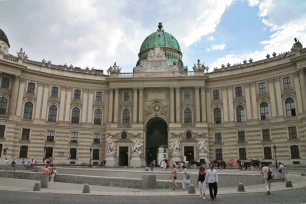
Michaelerplatz is dominated by the impressive Neo-Baroque Michaelertor, the entrance gate to the Hofburg. Opposite the palace is one of Vienna’s first modern buildings, the Looshaus. The oldest building at Michaelerplatz is the Michaelerkirche, long the parish church of the emperors. At the center of the square is an open area with Roman and medieval remains.
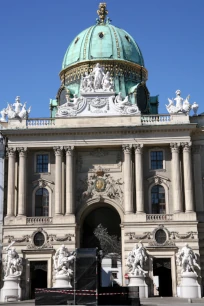
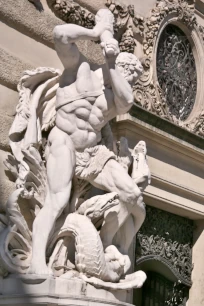
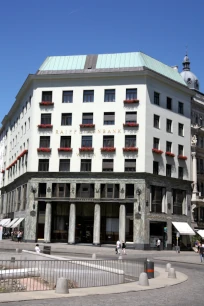
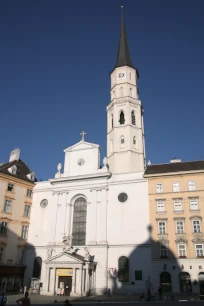
Michaelertrakt
The domed Michaelertrakt is one of the most exuberant wings of the imperial palace. It was originally designed in the 1720s by Josef Emanuel Fischer von Erlach, but the project stalled, and it wouldn’t be until 1888, when the old Burgtheater was demolished, that construction really started. Austrian architect Ferdinand Kirschner followed von Erlach’s original Baroque design and completed the wing in 1893.
At the center of the wing is a monumental gate, the Michaelertor. Along the sides of the three entrances are colossal statues of Hercules. At either end of the Michaelertrakt are large wall fountains with sculpture groups. The fountain on the right, the ‘Mastery of the Land’, was designed in 1897 by Edmund Hellmer and symbolizes the Austrian army. The fountain on the left is known as the ‘Mastery of the Sea’. It was sculpted in 1895 by Rudolf Weyr and symbolizes the Austrian naval power.
Looshaus
People now hardly notice the building when walking towards Michaelertrakt, but when it was built in 1911 the Looshaus caused quite a controversy due to its modern facade void of decorations, very unusual in Baroque Vienna. Adolf Loos was influenced by the nascent skyscraper architecture that he had seen on a trip to the United States, and employed a business-like style with straight lines and little or no decoration.
The modern design caused such an outcry that construction was even temporarily halted. Loos was only allowed to continue after he promised to decorate the facade with balcony flower boxes. Emperor Franz-Joseph I despised the modern facade opposite his palace, and it is said that the curtains in the wing opposite the Looshaus were always closed, so he wouldn’t have to look at it. Today, the building is considered an example of groundbreaking modern architecture.
Palais Herberstein
Opposite Herrengasse from the Looshaus is a more conventional Viennese building, Palais Herberstein, built in 1896-1897. It replaced an older structure, Palais Dietrichstein, which was famous for its Café Griensteidl, where a group of young poets and writers known as Jung-Wien gathered on a regular basis. After the café was demolished, they moved to the nearby Café Central, now the most famous of all cafés in Vienna. In 1990 a new, reconstructed Griensteidl Café opened in Palais Herberstein.
Michaelerkirche
The Michaelerkirche (St Michael’s Church) is the former parish church of the Austrian monarchy. It was originally built in 1221, but regularly expanded and modified to such an extent that it now consists of an amalgam of architectural styles. The tower is still Gothic and dates from the fourteenth century. The Neo-Classicist facade was designed in 1792. Of note is the sculpture group above the Baroque porch, depicting the Fall of Angels and created by Lorenzo Mattielli.
The Baroque interior is decorated with Renaissance frescoes and contains a magnificent organ, built in 1714 by Johann David Sieber. There are also some tombs in the church, but more spectacular are the catacombs, where bodies of people buried between the fifteenth and eighteenth centuries are still mostly intact due to the consistent climate. This part of the church can only be accessed in company of a guide.
Ruins
Excavations at Michaelerplatz unearthed remains of a Roman house, as well as some medieval foundations and remains of the former Burgtheater. The ruins are now exposed and can be seen from street level.
- Next: Peterskirche
- More Sights & Attractions in Vienna

